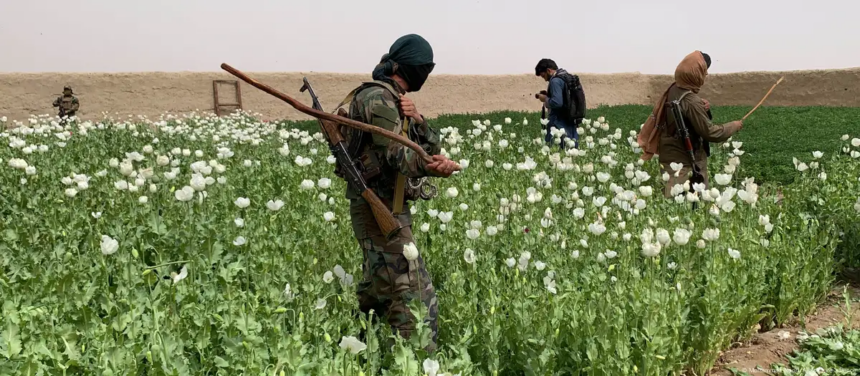RASC News Agency: The United Nations Office on Drugs and Crime (UNODC) has reported a notable decline in opium cultivation across Afghanistan, estimating that the total area under poppy cultivation in 2025 has fallen to approximately 10,200 hectares, representing a 20 percent reduction compared to the previous year. In 2024, cultivation covered 12,800 hectares, while before the Taliban’s declared opium ban, the figure soared to 232,000 hectares.
While the reduction in poppy fields might appear significant, UNODC experts caution that the decline is fragile and uneven, reflecting coercive bans rather than sustainable economic transformation. Farmers’ incomes have plummeted, and promises of alternative livelihoods under the Taliban’s anti-narcotics campaign have largely failed to materialize. For many rural households, opium was not merely a crop but a lifeline now replaced by low-value subsistence agriculture amid mounting economic pressures.
The UNODC report highlights that, although some farmers have shifted to grains and other basic crops, persistent drought, irregular rainfall, and a collapsing rural economy continue to threaten the sustainability of these shifts. Drought conditions have left at least 40 percent of arable land fallow, while resource scarcity, the forced return of more than 4.5 million Afghanistani migrants, and sharp reductions in international aid have intensified competition for limited livelihoods conditions that could once again drive desperate farmers back to illicit cultivation.
Oliver Stolpe, UNODC’s Country Representative in Afghanistan, emphasized the need for coordinated, long-term investment:
“Without sustained support for alternative livelihoods and rural development, any decline in poppy cultivation risks being temporary. Farmers require viable economic options if we are to prevent a return to illegal crops.”
UNAMA Chief Georgette Gagnon added that Afghanistan’s drug crisis extends well beyond its borders and cannot be addressed in isolation. She noted that regional and international coordination remains crucial, including the reactivation of the Doha Process Working Group to align strategies across stakeholders a task complicated by the Taliban’s opaque governance and policy inconsistencies.
Paradoxically, as traditional opium cultivation declines, synthetic drug production, including methamphetamine, has surged, according to the UN report. Analysts warn that this reflects a strategic pivot by organized criminal networks, who exploit the Taliban’s weak law enforcement and lack of institutional oversight. The rise of synthetic narcotics demonstrates that while the Taliban claim success in curbing poppy fields, they remain unable or unwilling to stem industrial-scale drug trafficking raising questions about the true intent and efficacy of their drug policies.
Observers argue that the Taliban’s opium ban functions more as a political performance aimed at gaining international legitimacy than a substantive policy for social or economic reform. Meanwhile, rural communities continue to face widespread poverty, food insecurity, and unemployment, highlighting that the temporary decline in poppy cultivation does not signal genuine economic stability.
Ultimately, Afghanistan’s fragile rural economy remains at risk. Without inclusive governance, transparent legal frameworks, and substantial investment in alternative livelihoods, the country’s drug economy is likely to shift rather than disappear, potentially expanding into more clandestine and industrialized forms of narcotics production.
The UN warns that failure to address the underlying socio-economic vulnerabilities, coupled with the Taliban’s restrictive and coercive governance, threatens both public safety and regional stability, leaving millions of Afghanistanis trapped in cycles of poverty, dependency, and insecurity.






